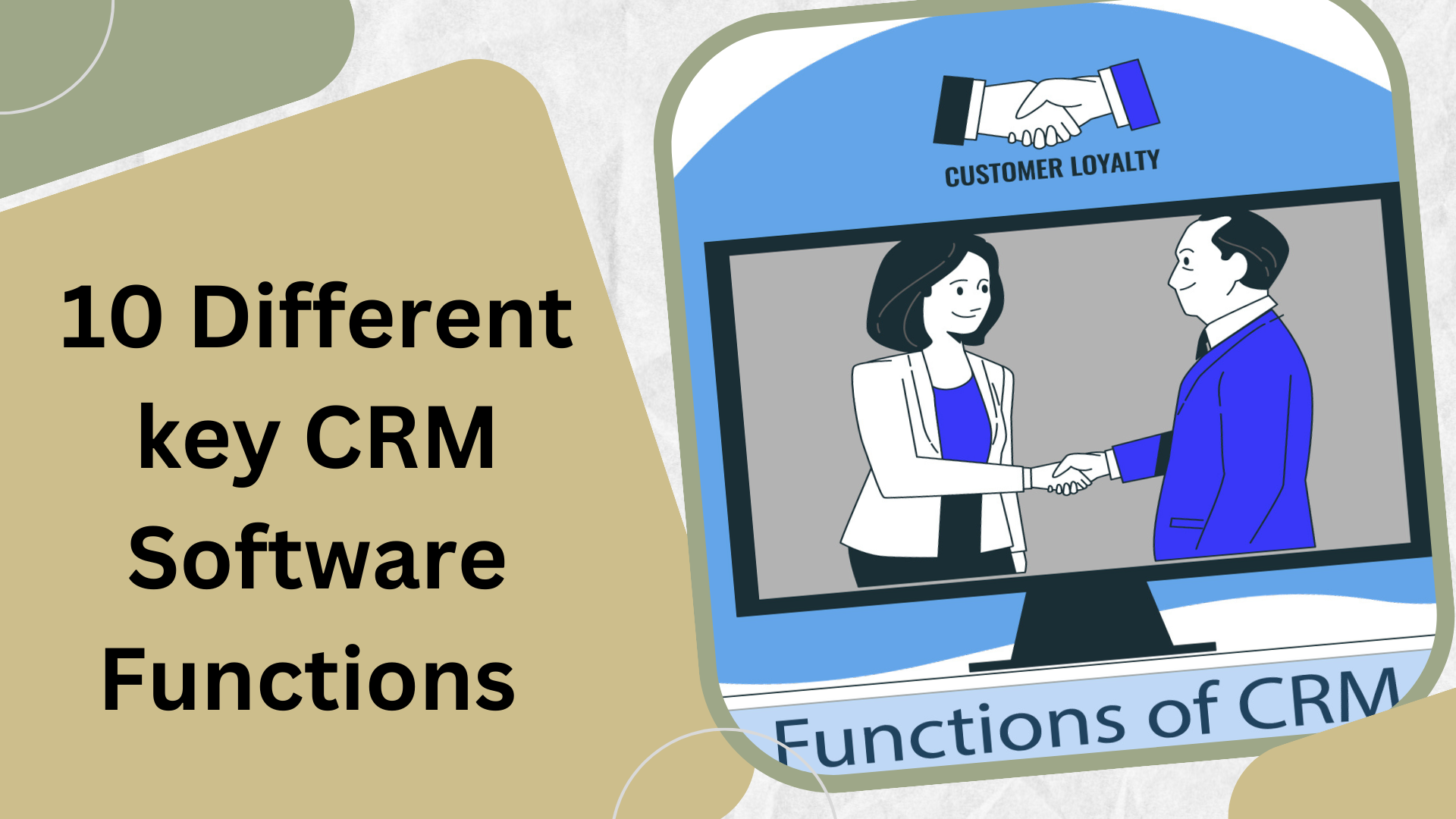
What are key Functions of CRM? -10 Effective Functions
10 Most Important CRM Functions and How They Assist
Peter Drucker, the renowned management guru, once stated that the primary objective of any business is to attract and retain customers. Throughout the years, both small and large businesses have utilized various manual methods to track and connect with their
customers. However, it was in the 1990s that the modern concept of customer relationship management (CRM) began to take shape. Initially, CRM software offered functions such as contact management, database marketing, and sales force automation.
10 Key CRM Software Functions:-
Gartner’s CRM Functionality Starfish report says that there are 232 CRM function subcategories, but no vendor offers functionality in more than 150 of them. We’ll discuss the top ten CRM functions you need and questions to ask vendors to check if their software meets your needs.
1.Lead management– Generating leads is crucial in the sales cycle. CRM software captures lead details from multiple channels and helps in managing, scoring, and tracking leads progress.
2.Contact management– Contact management involves collecting and storing customers details in a searchable database. It tracks customer interactions and creates a well-rounded client profile. This saves sales representatives time and effort by eliminating the need to remember customer details or search for them in multiple databases.
3.Email- Email is the top B2B communication channel. Manage it to send mass emails, track conversations, plan drip campaigns, and send automated emails. Buyers want CRM integration with email apps like Outlook or Gmail, according to Software Advice.
4.Reporting and analytics- CRM requires reporting and analytics across functions like sales, marketing, customer service, field service, and e-commerce. This enables tracking of metrics like profitability, customer retention rate, and marketing campaign effectiveness. Reports and dashboards provide a high-level view of business performance and can be shared with teams for collaborative decision-making.
5.Marketing- Marketing inquiries involve lead segmentation, campaign preparation and optimization tracking, social media support, content marketing, resource management, and automation. Marketing automation improves efficiency and reduces costs.
6.Pipeline management- Sales pipelines are an effective way to visualize the sales cycle and determine the stage of a particular deal in the sales funnel. They allow you to easily sort and filter deals and carry out bulk actions like sending emails to selected customers. If you sell multiple products, creating separate sales pipelines allows you to compare sales volume and prioritize deals while identifying ones that can be dropped.
7.Workflow automation- Automate workflows with if-then-else rules to save time on repetitive tasks like lead follow-ups, invoicing, and email sending. Get notifications when tasks are done and reminders for manual input. It helps salespeople avoid duplications and ensures the right actions at each stage of sales.
8.Document management- The CRM system simplifies document management by allowing you to create, access, edit, and share files securely with colleagues or clients. You can also view previous versions of any file.
9.Quotes/proposal management- CRM solution allows for creating, revising, exporting, and customizing quotes/proposals in client-specific currency and tax structures. Quotes can be shared easily for approval.
10.Forecasting- CRM forecasting uses past and present data trends to estimate future sales or revenue. Testing different scenarios improves predictability and helps with hiring inventory and investment decisions.





